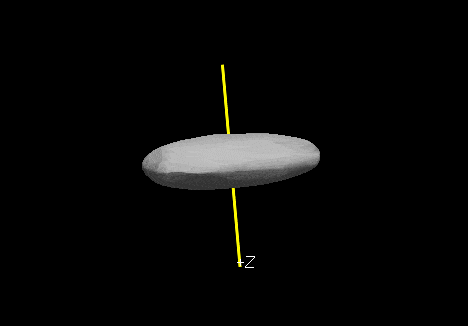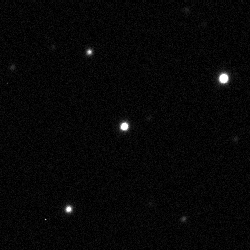Astrophysics

Dr. Andrew McNeill's research interests lie in the shape and rotational properties of minor planets within our Solar System. These objects represent the closest thing we have to leftover material from the original solar nebula so by understanding their properties and evolution we are able to understand more about how our Solar System formed.
This link takes you to a demonstration of the live construction of the light curve of asteroid '1693 Hertzsprung' using images from the Transiting Exoplanet Survey Satellite (credit : Michael Mommert, Stuttgart University of Applied Sciences).
Asteroids also represent the primary impact threat to the Earth, so their discovery and study is a key aspect of planetary defense. Using photometric observations from the BGSU Observatory and beyond we determine how fast these objects spin, estimate their composition and model their shapes.

Above: A three-dimensional shape model for asteroid 45864 constructed from several years of photometric observations
The underlying theme of Dr. Andrew Layden's work is to determine how our Galaxy (the Milky Way) formed. This research has taken several directions:
Studying the motions, positions, and compositions of old stars in the Galaxy.
Studying nearby galaxies to see how they may relate to the Galaxy ( Sagittarius andNGC 5206).
Studying the globular clusters (ancient, massive star clusters) of the Galaxy.
- Developing the tools with which to make these studies possible, including measuringdistances to RR Lyrae variable stars, and the amount of interstellar dust between us and the RR Lyrae stars.

The brightness variations of an RR Lyrae star:

Dr. John Laird (retired, Emeritus Professor) uses spectral analysis to determine the chemical composition of stars. He and his collaborators have developed a technique for analyzing very low-quality, noisey spectra, allowing measurements of much fainter and more distant stars than with conventional techniques. More detailed chemical analyses are used to measure individual elements. All of these data are used together to probe the origin of the chemical elements and the history of the Milky Way galaxy.

Updated: 12/17/2024 04:07PM

